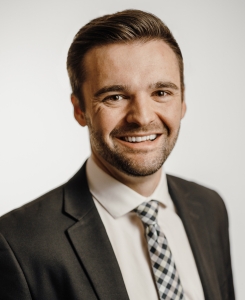By Jake Muszynski, Head of Consulting & Principal, Midwest
When a nonprofit organization hires and retains fundraising professionals, it can yield a substantial return on investment. Nonprofit development professionals dedicate their time to nurturing the multifaceted relationships between supporters and an organization’s mission; by investing in fundraising staff, an organization can deepen donor engagement and stewardship, ensure higher donor retention rates, and build relationships with new donors.
The Case for Fundraising Professionals
In a study that took place over nine years, the Council for the Advancement and Support of Education found that increased investment in advancement functions reaps higher rewards. The 2023 Philanthropy Pulse affirmed this finding, reporting that the organizations that focused on hiring fundraising staff or increasing salary and benefits for existing staff experienced greater organizational growth than those who did not.
While there are clear benefits to investing in fundraising staff, it can take months or years before your organization realizes the full impact as it takes time to build relationships with donors before they are typically ready to make major gifts. Due to this delayed result, some nonprofits hesitate to hire additional development staff or invest in retention strategies for their existing staff; however, dedicating resources to your development team can be one of the most important steps your organization can take to ensure the long-term growth and sustainability of your mission and impact.
In the following Q&A, CFA Principal Jake Muszynski shares several ideas about why hiring and retaining fundraisers pays off.
Q&A with Jake Muszynski
What staffing trends do you see within the development assessments and campaign readiness assessments that CFA conducts for nonprofit organizations?
Jake: In so many cases, we find a team that is operating beyond maximum capacity and struggling to meet their full potential. It’s really common within the development assessments and campaign readiness and feasibility studies that we conduct that we ultimately recommend investing in our client’s fundraising team. Many organizations don’t have enough bandwidth on their team to do what they are truly capable of, or they lack the resources to carry out their vision. And, because they don’t have enough people, everyone feels strained. Limited time exists for coaching, mentorship, and professional development for the team, much less for the focused, long-term cultivation of donors.
How can a CFA development assessment help a development office prepare for departmental growth and fundraising?
Jake: One really important way is that we take the assumptions out of the picture. Staff tend to know they are overburdened and understaffed, but because of the increased pressure to meet goals, they often can’t advocate enough on their own for change. During a development assessment, we offer solutions that are grounded in data, reviewing fundraising systems, donor data, and fundraising programs to clearly articulate the growth potential that already awaits a well-staffed team. We also take the internal pulse of the organization through a thoughtful interview process that includes staff, board, and donors to understand perceptions and pressures as well as future aspirations and goals. At the end of our process, organizations we work with are not only provided a set of actionable recommendations, but they’re also empowered to succeed with the defined path we pave for their success.
My colleagues, including CFA Consultant Rob Ruchotzke, recently worked with a client where we uncovered that a primary obstacle to their fundraising growth was recent staff cuts. In an effort to reduce expenses, this organization had inadvertently limited their ability to grow relationships with their donor base. This lack of capacity also prevented the fundraising staff from being able to fully execute plans aimed at donor retention and increasing gift sizes. As part of our assessment, we put together a five-year plan to double the size of their development department. Within this proposed model, we were able to demonstrate that the cost to raise a dollar of contributed revenue decreases substantially after the initial investment in staff capacity, while the potential major gifts revenue increases significantly as those donor relationships come to fruition.
What recruiting and retention advice do you give your nonprofit clients when they are hiring development staff?
Jake: Development staff are the front line to an organization’s ability to cultivate and sustain its donor network. Make the effort to invest in the people who manage the relationships with your organization’s most valuable asset: your donors.
When I became a fundraiser straight out of college, formal degrees and training programs to help me become a nonprofit fundraising expert didn’t yet exist. Luckily, as the fundraising field has expanded, the amount of professional development and training opportunities has grown substantially. I suggest nonprofits encourage their staff to pursue continual learning such as courses offered through the Association of Fundraising Professionals (AFP). I serve on the board of the AFP Minnesota Chapter, where we have made both membership and education sessions more accessible by eliminating fees and offering a pay-what-you-can model.
Fundraisers should also seek mentorship from outside your organization. Development staff need to commiserate with others who understand the roller coaster of the profession. Also, don’t overlook opportunities for personal/professional development that come with taking on new projects and responsibilities. Research has proven that on-the-job training has a higher rate of uptake and long term impact on skills development than external training programs.
How does an organization know when it is ready for a development assessment?
Jake: Organizations often call CFA in moments of transformation or moments of crisis. My biggest piece of advice would be to not wait for a crisis to evaluate your development strategy. There are several ideal times to conduct a development assessment: immediately following the launch of a new strategic plan, 12-18 months prior to a major capital campaign, or when you have had a significant leadership change. In other words, it’s always a great time to make sure your organization is fulfilling its potential and that those tasked with ensuring your mission’s sustainability are supported and well-equipped to do their best work.
Part of the reason I love doing development assessments, “The CFA Way” as we call it, is that I get to become part of the team for a time, where I can fully engage in the organization’s mission, understand the issues and opportunities that exist, and partner alongside the staff and board to unlock the door to a better and more impactful future.
Contact Us
If your organization is ready for a development assessment or tailored campaign consulting, contact CFA today.
Jake Muszynski, Head of Consulting & Principal, Midwest
Jake is a highly experienced fundraising and consulting professional with over 15 years of combined experience in the industry. He began his successful career in major gifts at higher education institutions and has since provided counsel to over 40 clients at CFA.
In this role, Jake leads major projects across the United States, including campaign readiness and feasibility studies, campaign planning and counsel, and development assessments. He takes a holistic approach to fundraising, considering organizational health from all perspectives and applying a mix of soft skills and data-driven decision-making to each unique situation.
A native of Perham, Minnesota, Jake holds a bachelor’s degree in communication from Concordia College. He and his wife have two children and share a love of folk and jazz music.

